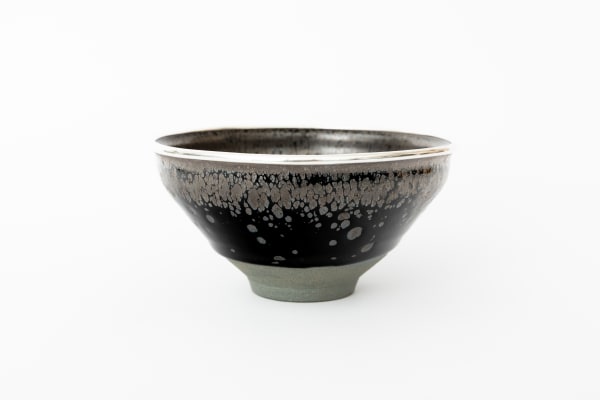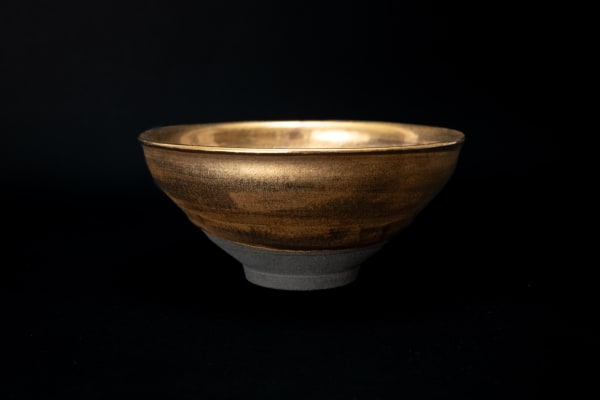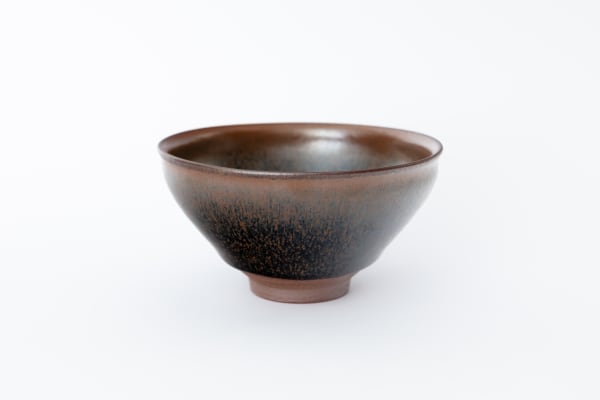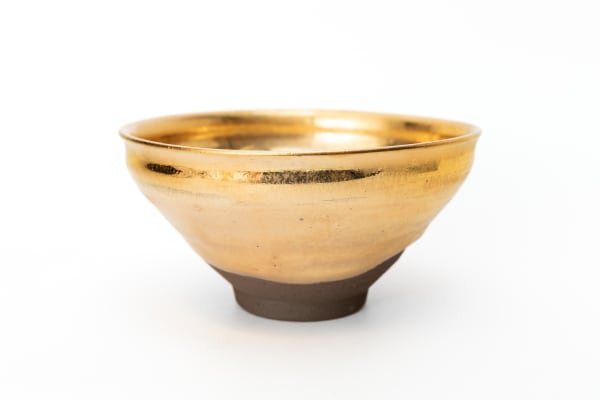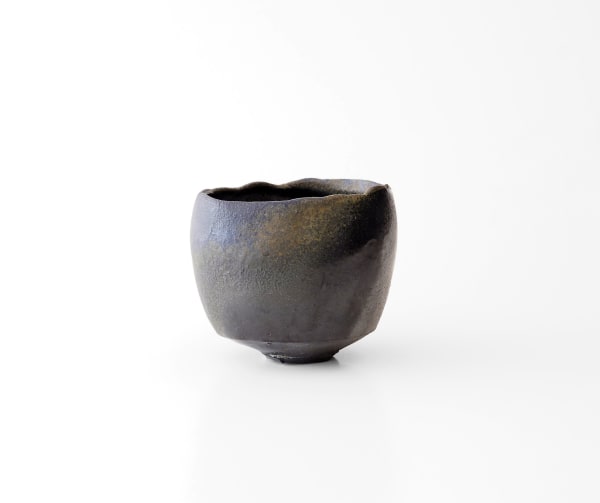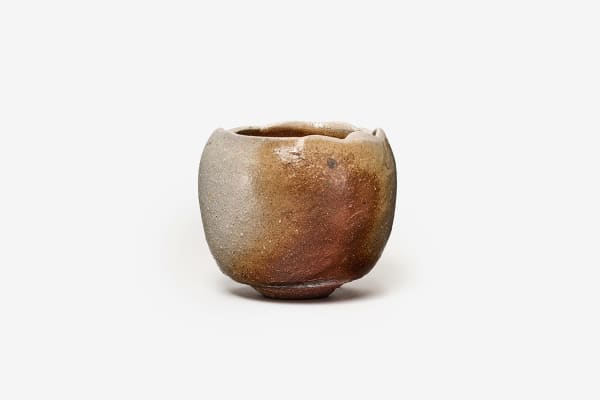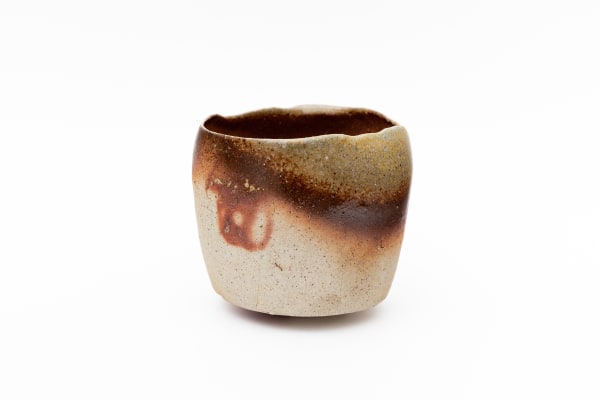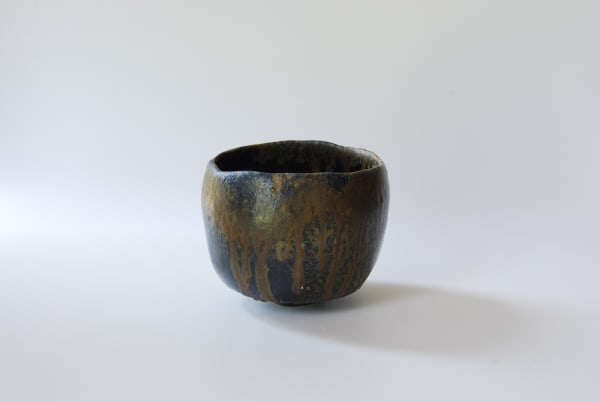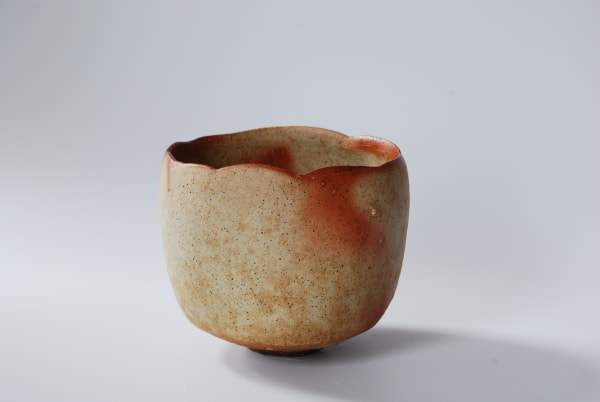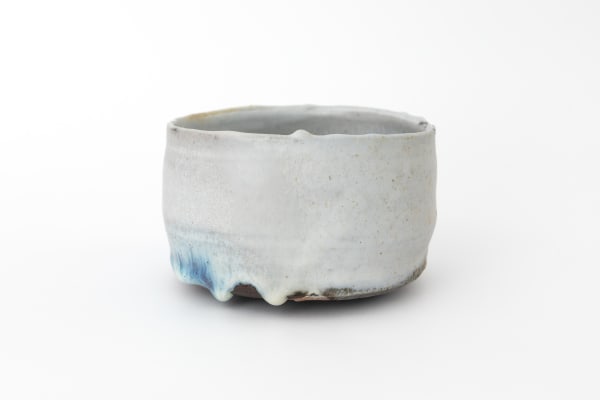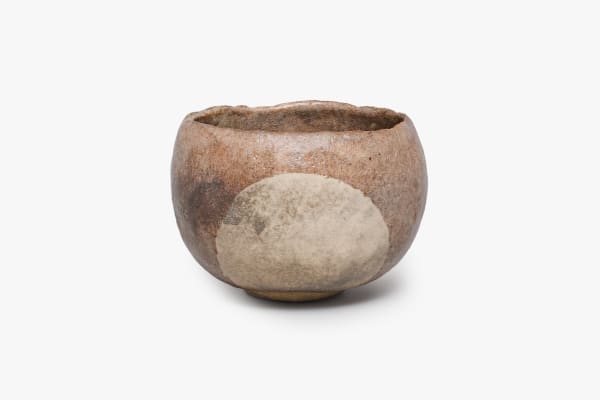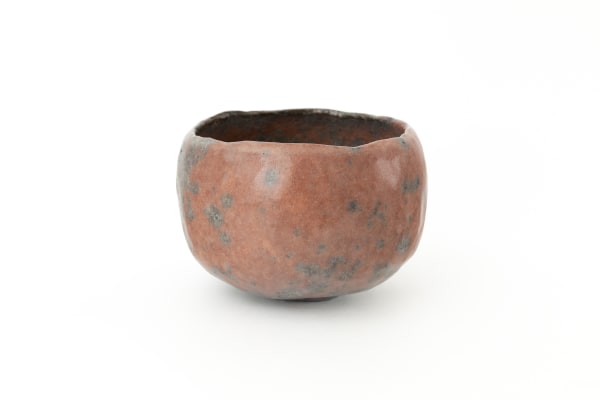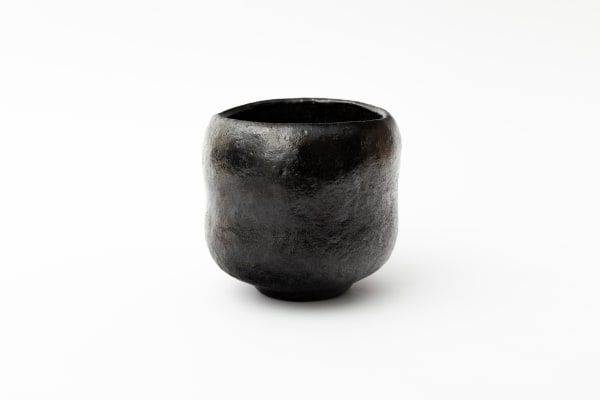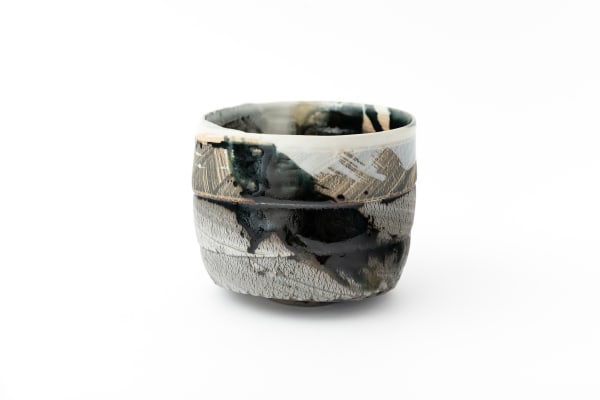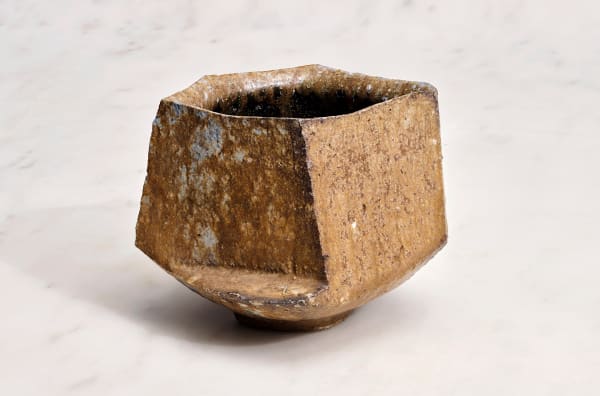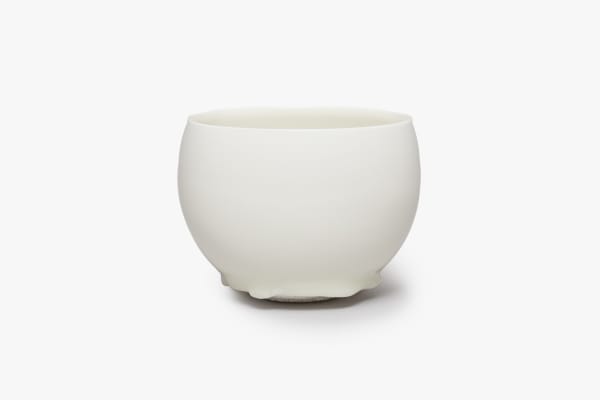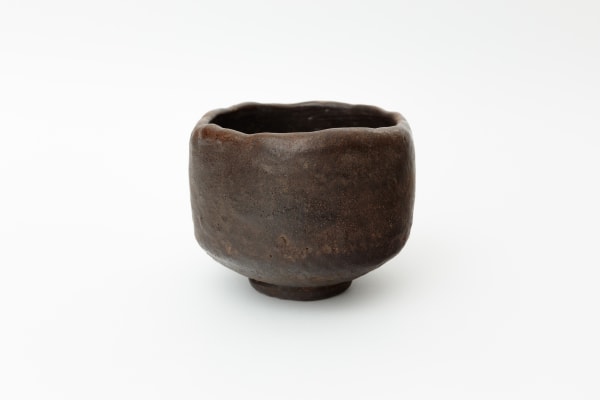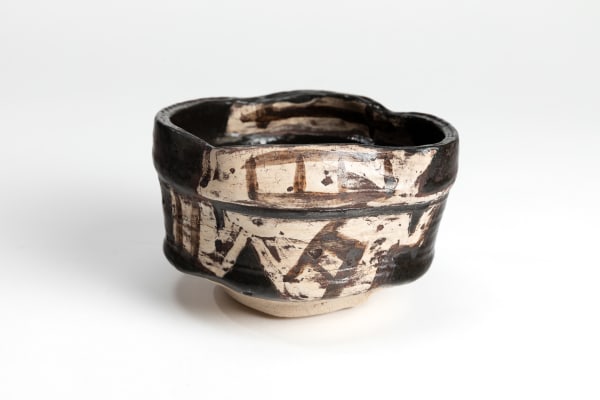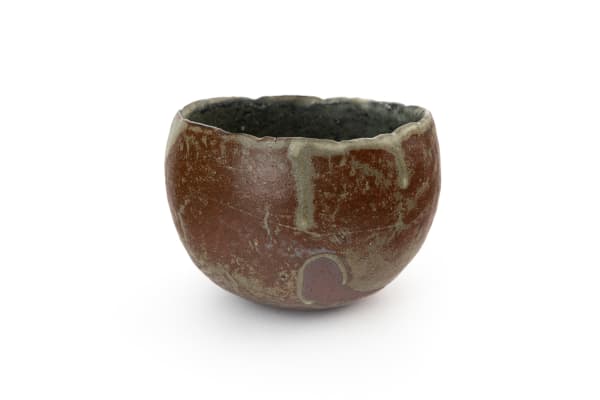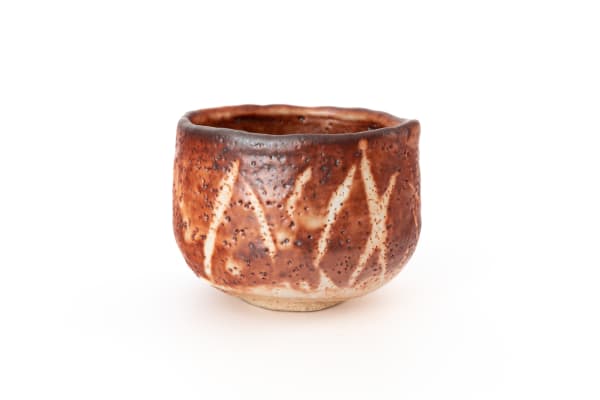-

Shin Fujihira (b. 1922–2012) came of age under the influence of his father, who established the Fujihira Pottery Company in 1916 in Gojozaka, the main pottery district in the city of Kyoto. Diagnosed with tuberculosis after the outbreak of the Pacific War, Fujihira struggled during his early adulthood, narrowly recovering from near death. Through this time, Fujihira turned towards art as motivation, and this passion was revitalizing. For Fujihira pottery was an escape from depression; an opportunity to transformation his appreciation for the joys of life.
-

Yasushi Fujihira (b. 1963) is an innovative potter known for his soft, matte-silver glazes. Fujihira studied in Kyoto, where the Fujihira family owned a ceramic company in the pottery district of Gojozaka. Under his father, Shin, Fujihira developed his own aesthetic, which earned him the Mayor’s Award at the 1990 Kyoto Arts Exhibition. Fujihira’s works were selected for numerous Asahi Modern Craft Exhibitions and the 2008 Ceramic Art Grand Prize Exhibition at Paramita Museum.
-

Noriyuki Furutani (b. 1984) is a master of the Tenmoku; Furutani’s perfectly shaped bowls accentuate the unfolding cosmos of the decorative oil spotting pattern. Furutani’s bowls are conventionally the most formal of tea bowls, as the style is based on the bowls of the Buddhist Tianmu Temple in China. Now based in Shigaraki, Furutani continues to hone his practice after completing artist residencies at Anderson Ranch Arts in Colorado, USA, and Hanaoki Kiln in Toki City, Gifu, Japan.
-
-
 The main apprentice of the living national treasure in bizen, Jun Isezaki, Hiroshi Goseki (b. 1988) is on the frontier of innovation in the traditional and well-established bizen style. Goseki outsources no aspect of his creative process; the import of bizen clay to his studio in Ibaraki prefecture, lumber foraging, a combination of wheel-thrown and hand-built techniques, and constant refueling of a the fourteen-day kiln fire required of bizen class ceramics are all elements that contribute to the artist’s unique pieces.
The main apprentice of the living national treasure in bizen, Jun Isezaki, Hiroshi Goseki (b. 1988) is on the frontier of innovation in the traditional and well-established bizen style. Goseki outsources no aspect of his creative process; the import of bizen clay to his studio in Ibaraki prefecture, lumber foraging, a combination of wheel-thrown and hand-built techniques, and constant refueling of a the fourteen-day kiln fire required of bizen class ceramics are all elements that contribute to the artist’s unique pieces. -
-
 Tomoyuki Hoshino (b. 1976) left his career to study ceramics under renowned ceramicist Ikai Yuichi, but though he became an artist in 2005, Hoshino carries his passion for people forward in his idea that the pink motif is a universal color inherent to humans. The color is not restricted by geography, sex, religion, or language. In 2013 he became a full member of the Japan Crafts Association, and his ceramics have since been exhibited extensively in Japan and Europe in both galleries and museums. In recognition of Hoshino’s unique approach, the artist has won many awards at Japan’s annual national and international exhibitions.
Tomoyuki Hoshino (b. 1976) left his career to study ceramics under renowned ceramicist Ikai Yuichi, but though he became an artist in 2005, Hoshino carries his passion for people forward in his idea that the pink motif is a universal color inherent to humans. The color is not restricted by geography, sex, religion, or language. In 2013 he became a full member of the Japan Crafts Association, and his ceramics have since been exhibited extensively in Japan and Europe in both galleries and museums. In recognition of Hoshino’s unique approach, the artist has won many awards at Japan’s annual national and international exhibitions. -
 Morimitsu Hosokawa (b. 1972) is a versatile potter whose ceramic works investigate classical Japanese visual language. A member of the veteran artisan Hosokawa family, Morimitsu maintains the conservative forms that are known as classic examples of Japanese technique. The wheel-thrown Ido style pieces are wide and open, contrasting the hand built, rounder Raku tea bowls in Hosokawa’s collection. Looking within each artwork, it is clear that Hosokawa seems to carefully consider the relationship between the surface and glaze, enhancing or hiding the clay depending on the particular style.
Morimitsu Hosokawa (b. 1972) is a versatile potter whose ceramic works investigate classical Japanese visual language. A member of the veteran artisan Hosokawa family, Morimitsu maintains the conservative forms that are known as classic examples of Japanese technique. The wheel-thrown Ido style pieces are wide and open, contrasting the hand built, rounder Raku tea bowls in Hosokawa’s collection. Looking within each artwork, it is clear that Hosokawa seems to carefully consider the relationship between the surface and glaze, enhancing or hiding the clay depending on the particular style. -
 Agnes Husz (b. 1961), though Hungarian born, has received the chawan tradition during her three decades in Japan. Her rustic, spiraling designs are styled from cut slabs of clay, which coil and converge in twisting abstract patterns. She has developed a very unique way of making. The basic element of each piece is very similar to the Japanese kimono obi-belt; the long flat stripes, what she stretched out of the clay by hand, form sash-like forms. Through mediating on her artwork, she wishes that her audience joins together to consider the relationship between nature and human beings and reflect on its elementary significance.
Agnes Husz (b. 1961), though Hungarian born, has received the chawan tradition during her three decades in Japan. Her rustic, spiraling designs are styled from cut slabs of clay, which coil and converge in twisting abstract patterns. She has developed a very unique way of making. The basic element of each piece is very similar to the Japanese kimono obi-belt; the long flat stripes, what she stretched out of the clay by hand, form sash-like forms. Through mediating on her artwork, she wishes that her audience joins together to consider the relationship between nature and human beings and reflect on its elementary significance. -
 Takeshi Imaizumi (b. 1978), though originally a student of Political Science and Economics, discovered his true passion in the wonders of ceramic and celadon. Paying close attention to the traditional masterpieces of the Song Dynasty in China, Imaizumi’s work develops optical illusions in tenmoku and celadon that create a sense of depth and voluminous form. His experiments with new glaze formulations and firing techniques are responsible for the layered patterning that define his pristine tea bowls.
Takeshi Imaizumi (b. 1978), though originally a student of Political Science and Economics, discovered his true passion in the wonders of ceramic and celadon. Paying close attention to the traditional masterpieces of the Song Dynasty in China, Imaizumi’s work develops optical illusions in tenmoku and celadon that create a sense of depth and voluminous form. His experiments with new glaze formulations and firing techniques are responsible for the layered patterning that define his pristine tea bowls. -
 A trailblazer among a family of traditionalists, Koichiro Isezaki (b. 1974) preserves his renowned father’s Bizen techniques while simultaneously reimagining the ceramic with atypical forms. Early in his career, Isezaki apprenticed with American sculptor Jeff Shapiro. Since his return to Japan, Isezaki established his kiln in Onadacho in Gifu prefecture. He has exhibited extensively, including at the National Museum of Modern Art Crafts Gallery and the Paramita Museum, where he won the Ceramic Art Grand Prize in 2011.
A trailblazer among a family of traditionalists, Koichiro Isezaki (b. 1974) preserves his renowned father’s Bizen techniques while simultaneously reimagining the ceramic with atypical forms. Early in his career, Isezaki apprenticed with American sculptor Jeff Shapiro. Since his return to Japan, Isezaki established his kiln in Onadacho in Gifu prefecture. He has exhibited extensively, including at the National Museum of Modern Art Crafts Gallery and the Paramita Museum, where he won the Ceramic Art Grand Prize in 2011. -
-
 The oeuvre of ceramicist Hiromi Itabashi (b. 1948) could easily be mistaken for soft sculpture, as his whimsical shapes contain an elegance seeming free of any rigidity. A modernist approach to traditional materials, Itabashi works mainly with white porcelain and chamotte. The use of these contrasting materialities allows for freer interplay of shapes and form. Itabashi complicates established notions of directionality, pushing the boundaries of how we look at an artwork.
The oeuvre of ceramicist Hiromi Itabashi (b. 1948) could easily be mistaken for soft sculpture, as his whimsical shapes contain an elegance seeming free of any rigidity. A modernist approach to traditional materials, Itabashi works mainly with white porcelain and chamotte. The use of these contrasting materialities allows for freer interplay of shapes and form. Itabashi complicates established notions of directionality, pushing the boundaries of how we look at an artwork. -
-

Yukiya Izumita (b. 1966) is the leading ceramicist of Japan’s northeast Tohoku arts region. He uses origami paper techniques to construct layered sculptures that reflect the harsh seaside atmosphere. The visual lightness of Izumita’s tiered ceramics betray the salt- and iron-dense clay collected from the coastal beaches. In response to the unrelenting northern environment, Izumita’s works come to resemble the strange and natural bluff rock formations. Izumita is the recipient of the 20th Biennial Japanese Ceramic Art Exhibition’s Excellence Award and the Grand Prize at the Asahi Ceramic Exhibitions of 2000 and 2002. His pieces are in collections including the Yale University Art Gallery, the Philadelphia Museum of Art, Minneapolis Institute of Art, and Iwate Museum of Art.
-

The ceramic works of Kan Kishino (b. 1975) exist within a similar earthen atmosphere. Kishino studied under famous ceramicist Dogyu Fukmori, with whom he perfected his aesthetic. Working in the heart of Shigaraki—one of the ancient kiln regions of Japan—his pieces are filled with influences from classic Yakishime and Ido styles. Kishino’s ceramics emphasize the spontaneity of a natural firing, incorperating traditional technique into contemporary ceramics.
-

Leading ceramicist Masahiro Maeda (b. 1948) is known for glaze-painted porcelains pioneering distinctly contemporary designs. Maeda's approach to iro-e technique innovate traditional Japanese forms and color arrangements. His method of creating woven texture using paint masks produces timeless layered and overlapping surfaces. Maeda's works exhibited at the Victoria & Albert, Smithsonian National Museum, and Tokyo National Museum among many others, and are in collections of the highest caliber including the Philadelphia Museum of Art, Art Institute of Chicago, and many more. Maeda's work has led him to serve as a judge at Japan's top ceramic competitions, and his contributions to contemporary ceramic design influence generations of Japanese artists as director of Japan Crafts Association in addition to many other leadership roles at key craft institutions.
-

Kohei Nakamura (b. 1948), third son of the robust Kanazawa ceramicist family headed by Nakamura Baizan, is a master at updating classical masterpieces to match a modern point of view. Immersing his ideas amongst artistic movements from Rocco and Baroque to the ceramics of Japan’s rinpa school of art, Nakamura’s tea bowls and sculptures reference great cultural touchstones with intriguing twists; kintsugi-like Ido-style, awhite-glaze dipped kohiki, and celadon of an atypical pigmentation are prime examples of Nakamura’s mastery.
-

Mokichi Otsuka (b. 1956) completed his studies in painting and then moved (1994 -1999) to Faenza Italy, deepening his course of study by graduating in Ceramic Art at the National Institute of Art and Ceramics G.Ballardini of Faenza. He creates a range of artworks with diligent and passionate work, from cat sculptures to tea bowls. As they bridge the worlds of Greco-Roman and Japanese art, Otsuka’s terracotta wares are unique. Even as the concepts endure, the artist deviates from prehistoric Japanese ceramic aesthetics and their contemporary experimentational counterparts.
-
 Shion Tabata (b. 1947) is a virtuoso ceramicist with a deep connection to the antiques of the Edo period. As an antiques dealer at Osaka’s Tanimatsuya Toda Shoten in 1985, Tabata encountered leading works of the period, including the Rinpa style of Ōgata Korin and Ōgata Kenzan, which continues to influence her creative practice. Tabata draws on her deep knowledge of Japanese antiques to revive a variety of classical styles that previously were noticeably missing from the world of contemporary Japanese art.
Shion Tabata (b. 1947) is a virtuoso ceramicist with a deep connection to the antiques of the Edo period. As an antiques dealer at Osaka’s Tanimatsuya Toda Shoten in 1985, Tabata encountered leading works of the period, including the Rinpa style of Ōgata Korin and Ōgata Kenzan, which continues to influence her creative practice. Tabata draws on her deep knowledge of Japanese antiques to revive a variety of classical styles that previously were noticeably missing from the world of contemporary Japanese art. -
 Kai Tsujimura (b. 1976) is a leading light of the generation of Japanese potters just now coming into their own. Thoroughly trained by his father, famous pottery Shiro Tsujimura, Kai embarked on his career in 2001 when he built his own kiln in the hills of Nara. Since coming into his own, Tsujimura continues exhibiting his ceramics artworks extensively in Japan and the United States. In 2010, Tsujimura’s large jar joined the Minneapolis Institute of Art’s permanent collection.
Kai Tsujimura (b. 1976) is a leading light of the generation of Japanese potters just now coming into their own. Thoroughly trained by his father, famous pottery Shiro Tsujimura, Kai embarked on his career in 2001 when he built his own kiln in the hills of Nara. Since coming into his own, Tsujimura continues exhibiting his ceramics artworks extensively in Japan and the United States. In 2010, Tsujimura’s large jar joined the Minneapolis Institute of Art’s permanent collection. -
 Shiro Tsujimura (b. 1947) began his artistic career studying oil painting; however, he became disillusioned during this process and eventually abandoned the idea. Inspired by a classic Ido teabowl from the Folk Museum in Japan, Tsujimura embarked on the journey of ceramic arts. He is known widely known as a master of pottery as his ceramic works reflect a level of sophistication and return to nature in the various clay bodies and glazes he used. His dedication to the ceramic arts bleeds into his lifestyle. In 1967, Shiro and his wife moved to Mima, Nara, where he currently resides, and built a home, a teahouse, and seven kilns over the years.
Shiro Tsujimura (b. 1947) began his artistic career studying oil painting; however, he became disillusioned during this process and eventually abandoned the idea. Inspired by a classic Ido teabowl from the Folk Museum in Japan, Tsujimura embarked on the journey of ceramic arts. He is known widely known as a master of pottery as his ceramic works reflect a level of sophistication and return to nature in the various clay bodies and glazes he used. His dedication to the ceramic arts bleeds into his lifestyle. In 1967, Shiro and his wife moved to Mima, Nara, where he currently resides, and built a home, a teahouse, and seven kilns over the years. -

The eldest son of the world-famous potter Shiro Tsujimura, Yui Tsujimura (b. 1975) pays special attention to natural materials and organic decorative appearances. Yui’s use of raw materials, especially charcoal ash thrown into the kiln during the firing, creates a refreshingly unique turquoise-green glaze rich with crystal and crazing patterns. Yui’s ceramics are in several impressive collections including the Metropolitan Museum of Art and the Detroit Institute of Arts.
-

The ceramic works of Kodai Ujiie (b. 1990) are refreshingly avant-garde. Since his debut exhibition in 2014, Ujiie’s colorful and abstract wares have interpolated the kintsugi lacquer mending technique and experimented with unusual celadon colors. Ujiie now works from his kiln in Tajimi, Gifu Prefecture.





